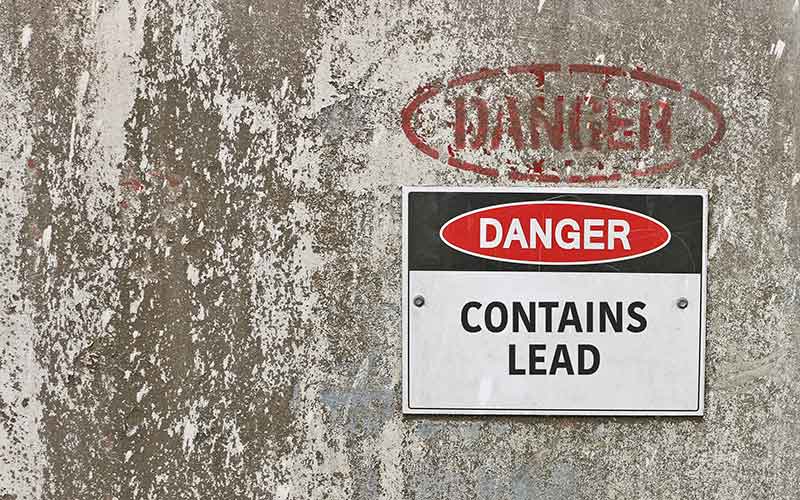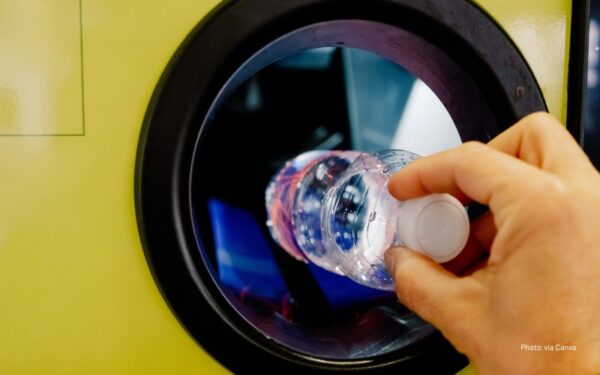
Maine is leaving hundreds of children at risk by failing to screen them for lead poisoning. Photo: Kim Britten via Shutterstock
Update: On June 27, Governor Mills signed two new lead bills signed into law that may help change this disturbing trend
Hundreds of children with lead poisoning go undiagnosed every year in Maine. That’s on top of the hundreds of Maine children who are diagnosed with lead poisoning annually. In addition, more than half of the children the State is required to test for lead poisoning are not being screened.
These are the disturbing headlines from two recent reports that give us a detailed look at how well Maine is doing when it comes to treating and preventing lead poisoning.
All of this is happening in a state with some of the toughest lead laws in the country – and in the face of the enormous and well-documented costs of lead poisoning. To reverse these trends, and safeguard our children, Maine needs to make lead poisoning prevention a public health priority by fully enforcing our tough lead laws.
Maine Must Start Enforcing Its Tough Lead Laws
In recent years, Maine has become a leader in lead paint protection standards. In 2015, the state reduced its blood lead level to 5 micrograms per deciliter. If the amount of lead in a child’s blood equals or exceeds that level, the Maine Center for Disease Control and Prevention (CDC) initiates a response and provides a full lead investigation of the child’s home. Though any level of lead is dangerous to children, the new standard is the same recommended by the national Centers for Disease Control and Prevention. The recent legal revisions also grant state health officials authority to levy fines for violations of the lead laws.
State and federal laws also require Maine health officials to test all one- and two-year-old children who are enrolled in MaineCare (the state’s Medicaid program) for lead poisoning. This requirement is a critical element of protecting Maine’s most vulnerable children. As we reported earlier, the lifelong health effects of lead poisoning on the growth and development of our children are staggering. Treating poisoned children generates enormous and long-lasting healthcare costs annually, amounting to tens of millions of dollars nationwide. But the social and economic costs, now and in the future, are even higher.
New Lead Poisoning Reports Reveal Maine’s Failures
A new report issued by the Maine Department of Health and Human Services (DHHS) to the Maine Legislature discusses the State’s current efforts and reveals its failure to enforce state and federal lead laws. The report calls lead poisoning “one of the major environmental health threats for children in Maine,” noting that, in 2017 alone, an estimated 392 children were identified as poisoned. What’s more, despite increasing inspections and orders to abate, the report openly admits that “the statutory mandate for universal testing of [one- and two-year-old children in MaineCare] is far from being met.” In 2017, only 54% of one-year-olds and 36% of two-year-olds covered by the state healthcare program were tested.
Similarly, a new report commissioned by the Maine Affordable Housing Coalition (MAHC) highlights more troubling trends in Maine. The report, which compares lead poisoning screening practices in Maine and the rest of New England, shows that our overall screening rates are well below those of New Hampshire, Vermont, Rhode Island, and Massachusetts. As a result, hundreds of children are left undiagnosed and untreated in Maine every year, essentially robbing these children of their full potential.
The reasons for these failures are complex: Doctors may not know about the MaineCare requirement or may not take the time to broach and perform testing during already busy wellness visits. At the same time, DHHS’s funding for outreach and enforcement of the law is limited. But the complex causes of these failures do not excuse inaction on the part of health officials, medical professionals, or public health advocates, all of whom have a role to play in raising awareness and enforcing Maine’s laws.
We Must Do More to Protect Our Children
Maine can and must do more to address this public health crisis. That means raising awareness among parents and physicians, increasing screening rates, and preventing poisoning from happening in the first place. One bill currently awaiting enactment by the Governor, and another just enacted, hold the promise of additional protections for children, if the State enforces and fully funds them.
The first, LD 1116, An Act to Strengthen the Lead Poisoning Control Act, would require testing of all one- and two-year-olds in the state. Maine is the only New England state that does not require such universal screening. CLF testified in support of this proposed legislation, which would ensure early identification and treatment of lead poisoning. The bill has passed the House and Senate and is awaiting the Governor’s signature.
Update: On June 27, 2019, Governor Mills signed LD 1116 into law, marking a significant milestone in Maine’s efforts to combat this public health crisis. Not only will universal testing help diagnose and treat poisoned children, but it will also help the state determine areas where lead poisoning is prevalent. Identifying areas where poisoned children live can also help efforts to prevent other children in those areas from being poisoned in the first place.
The second, LD 153, An Act to Strengthen Testing for Lead in School Drinking Water, which is now law, mandates all schools, private and public, that use public drinking water to test it for lead. The bill also requires Maine DHHS to adopt rules necessary to carry out the testing. Because the law also specifies that the testing only occurs to the extent DHHS provides resources to the schools, it is critical for the State to appropriately fund DHHS’s lead poisoning prevention work to ensure we can protect our children and their future.
We Cannot Afford to Gamble with Our Children’s Health
CLF is fighting to end childhood lead poisoning across New England. In Maine, where nearly 60% of our homes and apartments buildings were built before the 1978 ban on lead paint, it is imperative that we commit the funding and resources needed to address this health crisis now before we put another generation of children at unnecessary risk.



